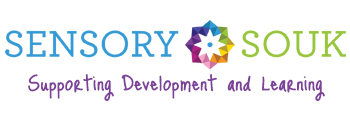Top Tips For Creating A Great Learning Environment
Every educator strives to create a great learning environment for their students, but what makes it great?
Lowri Gough: I aim to meet individual needs and inspire students to learn, providing support and knowledge to deliver the best learning experience possible. I am a ALN teacher in Wales who teaches eight wonderful children in a SEN School. For the past two years I have worked with Louise Maggs, Pyramid UK Clinical Director to gain and maintain Pyramid Certification in my classroom. This process has helped me to create an effective and efficient learning environment.
Here are some top tips for creating a great learning environment for your students.
Designated Areas:
In your classroom layout ensure there are clear areas that show where students are expected to work or complete activities. Students found labelling each area useful, for example ‘blue table’, ‘choosing area’, these areas would have corresponding symbols to support visual schedules and enable ‘check in’ to each area. Additionally, It would highlight the importance of ensuring each area has potential to be multifunctional, for example one day the ‘blue table’ could be used for writing practice but the next day we could use it for a cooking lesson. The names of the areas stay the same but the resources at each table define what activity is taking place.
Following on from the layout of your classroom, introducing visual schedules was a crucial part of creating a meaningful learning environment. Students have their own visual schedules to help understanding of expectations throughout the school day. Removing prompts for schedule use promotes independence when transitioning around the classroom and school.
Expanding Skills to the Wider Learning Environments:
A lot of teaching takes place within the classroom, however, to ensure generalization of skills we need to apply learned skills to other environments. Within school there are many opportunities to create great learning environments, playgrounds, school hall, sensory room, swimming pool, and other classrooms. Having areas specified on visual schedules collaboratively supports students to explore the wider learning environments in school. This increases flexibility of where you can take your teaching.
Rotation of Activities and Provision:
Repetition at times can be useful for some of our learners, however we want to keep students engaged and inspired to learn. Having a bank of resources to rotate throughout the week works well and as a class team we continuously build on our resources. Most importantly within these activities we need to think about what specific skills we are teaching. Maybe one lesson we can focus on receptive communications skills and the next we can look at following verbal instructions, both using the same materials.
Token Economy:
Even though we strive to make all the activities we offer motivating and engaging, some tasks will not be preferred by our students. There are also occasions where we want to let our students know that they have done something great or encourage the development of a new skill. Using a token economy system is a tool that I find essential for teaching a range of skills to my learners. In starting off with small demands with a one token board and gradually extending them to more time on task using a five token board my learners can be reinforced for their great learning, and it helps the staff team to keep them on task.
Whether my students are taking some time for a break from the lesson, counting down until the end of their turn with a fun activity or extending the time that we are teaching them to wait, a timer is an essential tool for all the team in my classroom. Sometimes staff will be using it to monitor and extend learner skills and sometimes learners are being taught to use it independently to monitor their own time. I recommend a timer that has an alert at the end of the time period to help everyone in the classroom adhere to the agreed timings.
Create a fun, trusting and functional environment where students have the opportunity to fulfil their learning potential.
by Lowri Gough
Source: pecs-unitedkingdom.com
Shop our Visual Communication Tools here.
- Chenne Daig






